How to Start Planning: 15 Tips to Start a Planner
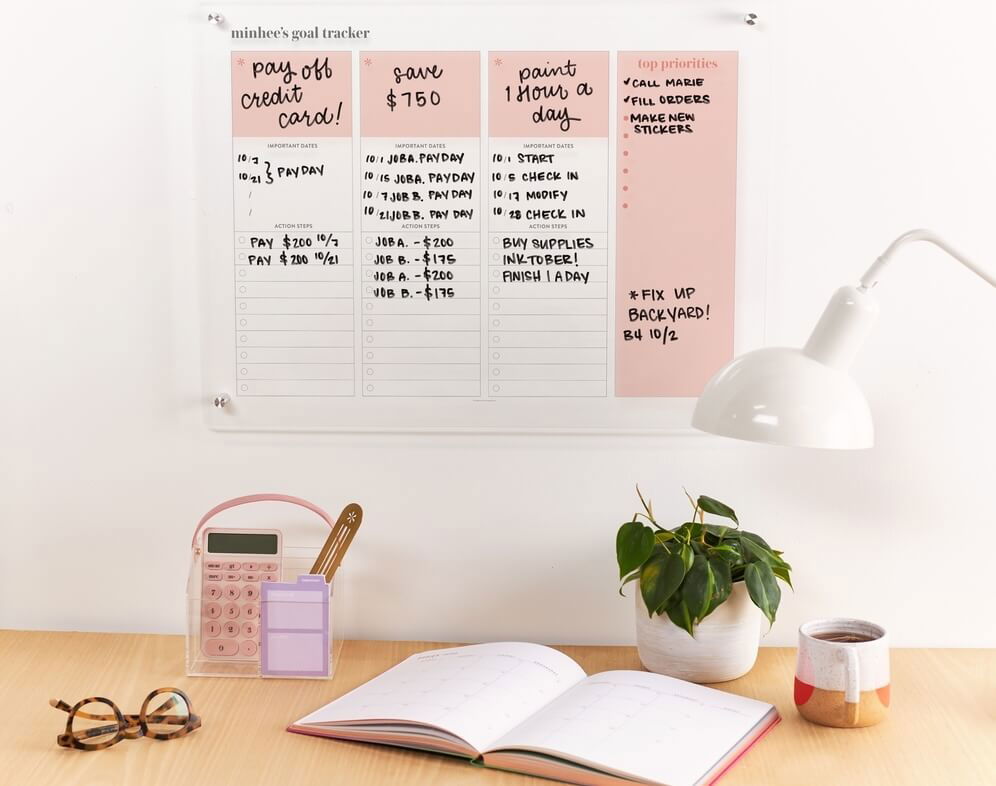
Whether you're a seasoned planner enthusiast or a novice eager to embark on an organized journey, our Erin Condren planning experts have designed this guide to make your life more streamlined and easier.
A planner (also referred to as a life planner, organizer, day planner, and more) isn't just a schedule book; it's a tool that can transform your chaos into order, and your dreams into achievable goals. And the best planners combine the functions of a calendar, checklist, and journal in one. So, let's delve into the world of planning and uncover our top 15 tips to kickstart your planner journey.
Table of Contents
How to Start Planning
1. Find the Right Planner That Suits Your Schedule and Style.
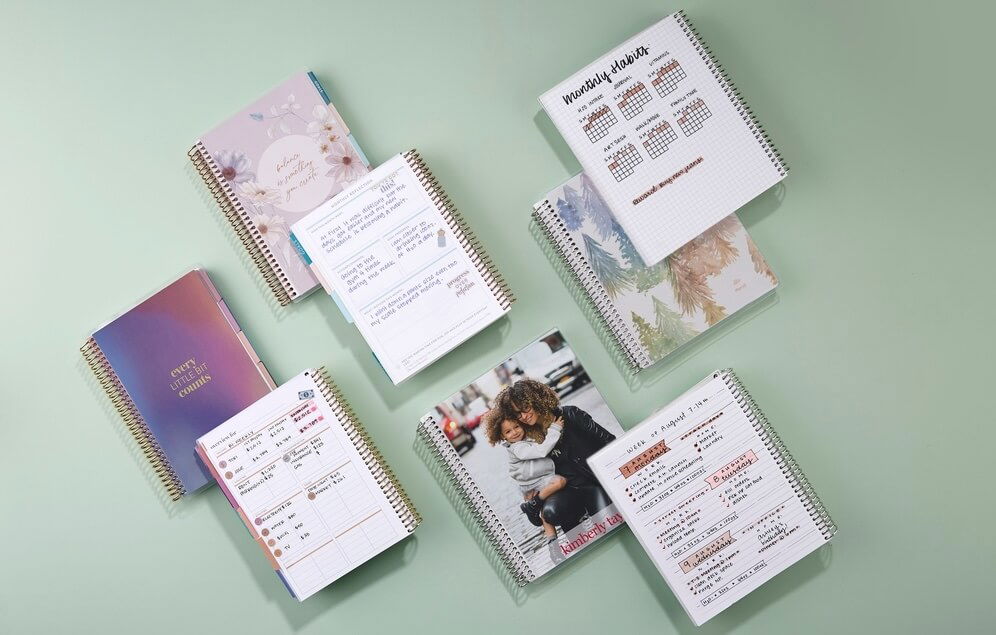
Your journey to effective planning begins with the perfect organizer for you. Planner size, layout, and additional features such as goal-setting pages or habit trackers are essential considerations. A life planner that resonates with your style not only ensures functionality but also adds a touch of joy to your planning routine.
Choosing between a daily, weekly, or monthly planner depends on your scheduling preferences for the year and how you like to organize your days, weeks, and months.
Daily planners suit those with detailed daily activities, while weekly planners provide a broader overview. Monthly planners, on the other hand, offer a big-picture perspective, helping you plan efficiently.
2. Fill in the Monthly Spreads First.
The monthly spread is the canvas upon which you paint the broader strokes of your life. Use this space to mark significant dates, business or doctor's appointments, and events. By establishing a monthly foundation, you set the stage for more detailed planning in the weeks and years to come.
3. Write Down Your Monthly Goals and Break Them Down Into Actionable Steps.
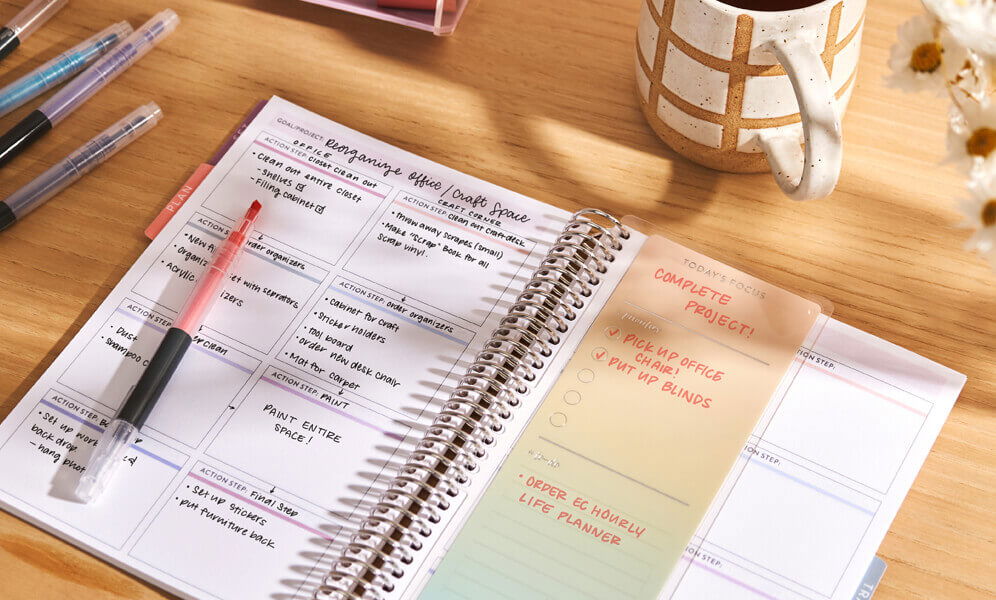
Set achievable goals for the month and break them into smaller, actionable steps. This adds clarity to your objectives and makes them more manageable. Turn your objectives into tangible achievements by setting monthly goals.
Whether you’re setting goals for money, business, wellness, or home life this planning process will help you get there. Breaking these goals into actionable steps not only clarifies your path but also transforms the seemingly insurmountable into manageable tasks, month by month and throughout the year.
Learn more with Family Goal Setting Made Easy: Tips + Examples for Success.
4. Plan a Week Ahead.
As the saying goes, failing to plan is planning to fail. Take a few minutes each week to outline your upcoming week. This is a great way to declutter your schedule (and mind!) and prevent last-minute stress, allowing for better time management.
Proactive planning is a cornerstone of effective time management. Dedicate a few moments each week to outline the upcoming week. This practice not only prevents last-minute chaos but also allows for better preparation, ensuring you tackle each day with purpose.
5. Utilize Time Blocking to Maximize Productivity.

Time blocking is a game-changing strategy that involves allocating specific time slots for designated tasks. This helps you focus on one thing at a time and ensures that important activities are noticed by more crucial ones. By focusing on one activity at a time, you enhance productivity and prevent essential tasks from being overshadowed by less critical ones.
6. Allow Extra Time on Sundays.
Use Sundays as a planning day to review the week ahead, set priorities, and make adjustments if necessary. Sundays are not just the end of the week but also the gateway to the next. Use this day as a planning hub, reviewing the week that passed and setting priorities for the week ahead. This helps you thrive within your short-term objectives. Whether they are for business, school, home, or with family members, this is a great way to prepare you for a smoother start to the upcoming week.
7. Do a Daily Brain Dump.
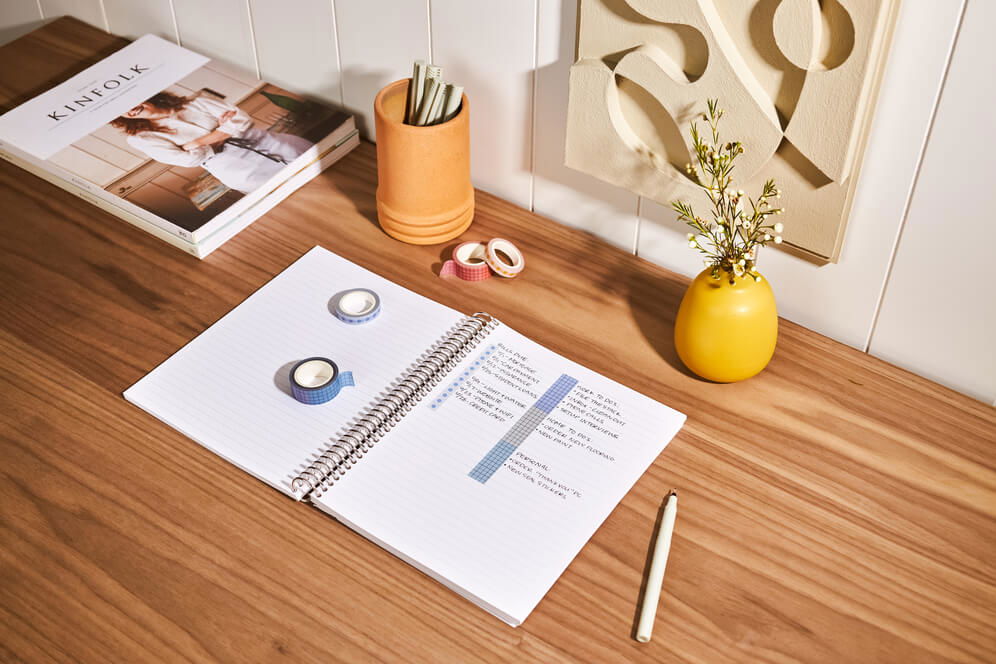
Clear your mind by jotting down all your thoughts, tasks, and ideas in a daily brain dump. Take a moment each day to jot down all your thoughts, tasks, and ideas. This therapeutic exercise declutters your mind, allowing you to approach each day with renewed focus and clarity.
Break up the different objectives in your life and let all the ideas fly onto paper. Whether you have thoughts or ideas about family members, personal goals, or business it’s better to put them onto paper. This simple exercise can declutter your mind, allowing you to approach your day with more focus.
Learn More with How to Organize Your Thoughts in 5 Simple Steps.
8. Write Down Your Top Three Priorities for the Day.
Identify the three most critical tasks for the day and make them your primary focus. By accomplishing these priorities, you ensure that even if unforeseen challenges arise, you've already made significant progress toward your goals.
This process ensures that even if the day takes unexpected turns, you've tackled your key priorities. Adding this process into your daily routine will set you up for success throughout the rest of the year.
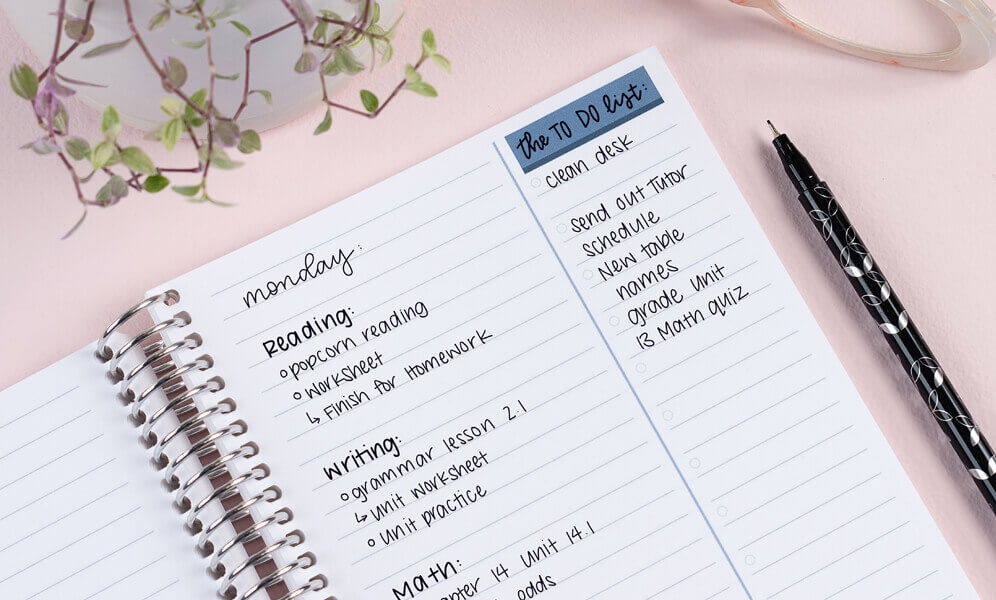
9. Break Down Your Daily Priorities Into a Simple To-Do List.
Transforming daily priorities into a straightforward to-do list is a practical approach to managing your day throughout the planning process. Breaking larger tasks into smaller, achievable steps reduces the intimidation factor and sets the stage for success. Now your to-do’s will be less overwhelming and more achievable.
10. Use Color-Coding or Planner Stickers for Enhanced Organization.
Add a splash of creativity to your organizer by using color-coding or stickers. Experiment with color-coding or incorporate planner stickers to visually distinguish between various tasks and categories. Not only does this enhance organization, but it also adds a touch of personalization. This makes your planner visually appealing and helps differentiate between various tasks and categories.
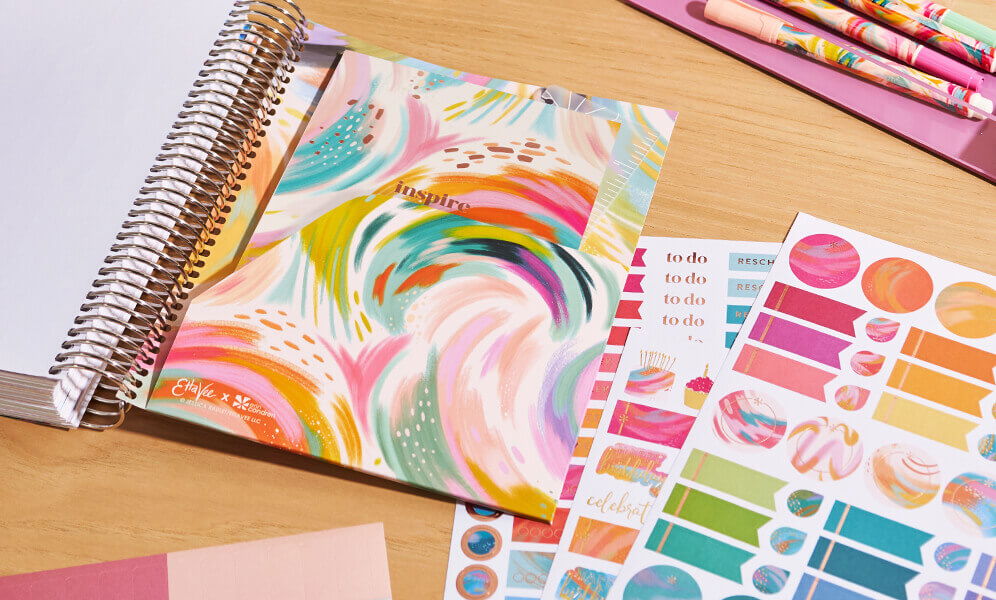
Learn more about how to use stickers in your planner.
11. Use the Full Functionality of Your Planner.
Discover all the features your organizer offers. From goal-setting pages to habit trackers, make the most of every section. Modern planners come equipped with an array of features beyond simple date tracking.
Explore and utilize all the functionalities your planner offers, from budget planning pages and wellness trackers to note sections and inspirational quotes. Tailoring your organizer to your life and unique needs enhances its effectiveness. Customizing your planner to suit your needs enhances its effectiveness.
12. Keep Your Planner Visible and Check in With It Regularly.
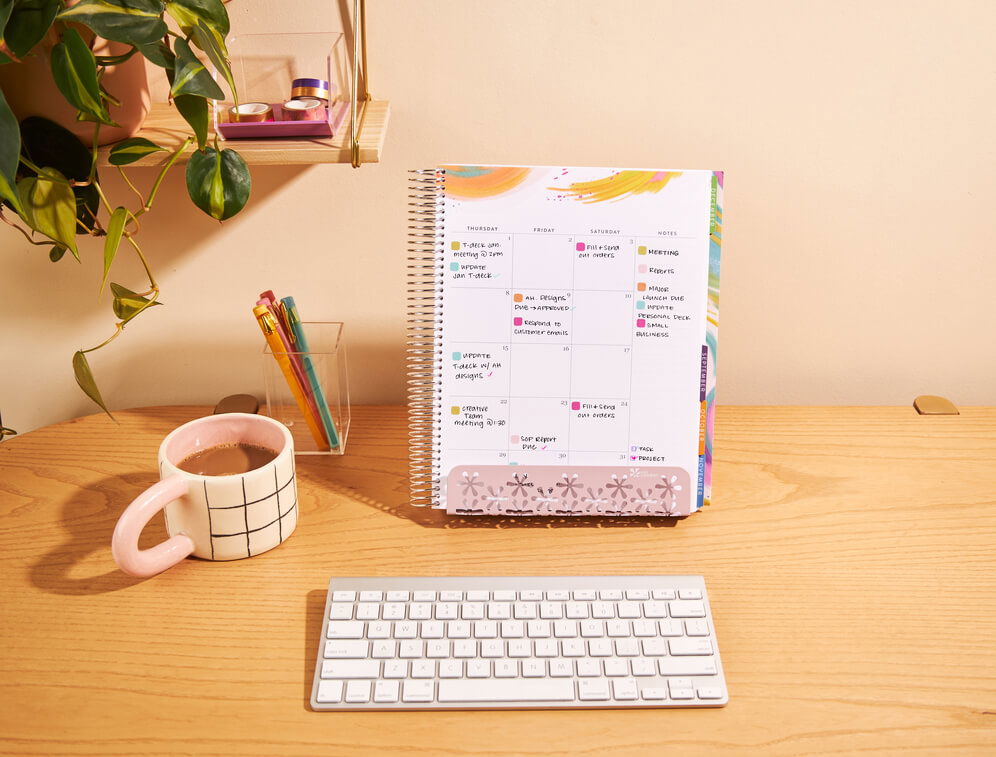
Place your planner in a prominent spot to serve as a constant reminder. Out of sight often means out of mind. Keep your planner in a visible spot, making it a constant visual reminder of your life, goals, and plans. Regularly checking and updating it ensures you stay on track and can adapt to any changes in your schedule promptly.
13. Adjust Your Plans When Needed.
Flexibility is the hallmark of a successful planning process. Life is unpredictable, and plans may need adjustments. Part of the planning process is learning to use the right tools to fix or update plans that have changed.
There is no perfect organizer spread to showcase your life and it’s okay to move things around. Be open to change, adapt your schedule as circumstances evolve, and embrace the fluidity of life.
14. Stick With It!
Consistency is the secret ingredient in a successful planning routine. Even on days when your life and motivation wane, adhering to your planning objectives builds discipline and resilience, crucial elements for achieving long-term goals. Even on days when life feels challenging, sticking to your planning objectives pays off in the long run.
15. Allow Yourself to Enjoy the Process.
Lastly, remember that the planning process is not just about productivity; it's also about enjoying the process. In the pursuit of productivity, don't forget to savor the journey. Celebrate your achievements, relish the satisfaction of checking off tasks, and find joy in the process of turning dreams into reality.
Your organizer is not just a tool; it's a companion on your journey to a more intentional and fulfilled life. Embrace the satisfaction of checking off tasks and celebrating your achievements, no matter how small.
Want more tips and ideas? Start with How to Use a Planner for Beginners.
FAQs: How to Start a Planner
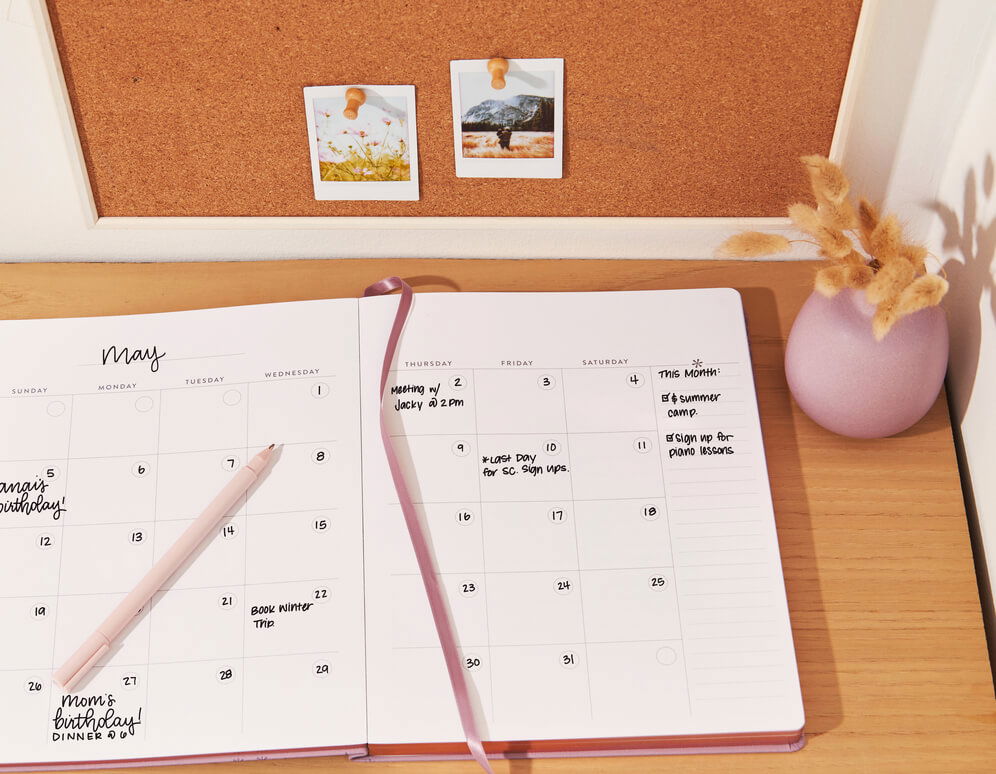
Why Choose a Paper Planner?
While digital tools have their merits, a paper planner offers a tangible, distraction-free space for reflection and planning. It allows for a more personal touch and helps reduce screen time.
Learn more about the pros and cons of digital vs paper planners.
How Can I Personalize My Planner to Make It Uniquely Mine?
Make your planner reflect your personality by adding personal touches. Use colored pens, stickers, or even drawings to make it uniquely yours. This personalization enhances your planning motivation and makes it just plain fun to keep it up.
How Can I Track Habits and Progress in My Planner?
Include habit trackers in your planner to monitor your progress. Set specific goals and mark them daily. Whether you want to plan out your budget and track goals for money, start a business and track productivity, or stay on top of home organization, habit trackers will show you your progress and help keep you accountable. This not only boosts motivation but also provides a visual representation of your achievements.
Starting a planner is a great way to enjoy a more organized, intentional life. By implementing these 15 tips from our Erin Condren planning experts, you will lay the foundation for your new, successful planning routine. Remember, an organizer is not just a book; it's a companion on your journey to productivity and fulfillment.
So, explore the best planners, notebooks, and journals, embrace the process, and watch as your dreams unfold in the pages of your organized life.
Related Planning Guides
You may also enjoy the following planning and organization guides: